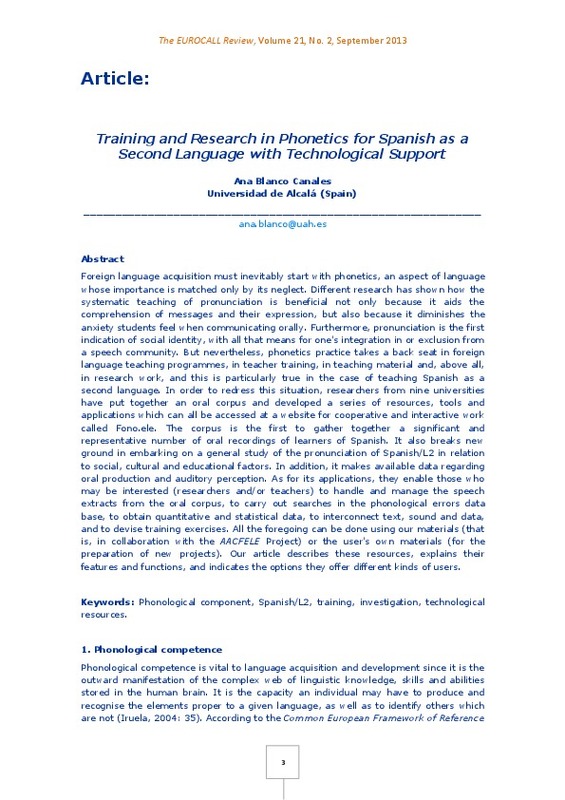JavaScript is disabled for your browser. Some features of this site may not work without it.
Buscar en RiuNet
Listar
Mi cuenta
Estadísticas
Ayuda RiuNet
Admin. UPV
Training and Research in Phonetics for Spanish as a Second Language with Technological Support
Mostrar el registro completo del ítem
Blanco Canales, A. (2013). Training and Research in Phonetics for Spanish as a Second Language with Technological Support. The EuroCALL Review. 21(2):3-26. https://doi.org/10.4995/eurocall.2013.9787
Por favor, use este identificador para citar o enlazar este ítem: http://hdl.handle.net/10251/138526
Ficheros en el ítem
Metadatos del ítem
| Título: | Training and Research in Phonetics for Spanish as a Second Language with Technological Support | |
| Autor: | Blanco Canales, Ana | |
| Fecha difusión: |
|
|
| Resumen: |
[EN] Foreign language acquisition must inevitably start with phonetics, an aspect of language
whose importance is matched only by its neglect. Different research has shown how the
systematic teaching of pronunciation is ...[+]
|
|
| Palabras clave: |
|
|
| Derechos de uso: | Reconocimiento - No comercial - Sin obra derivada (by-nc-nd) | |
| Fuente: |
|
|
| DOI: |
|
|
| Editorial: |
|
|
| Versión del editor: | https://doi.org/10.4995/eurocall.2013.9787 | |
| Tipo: |
|







![HTML file [HTML]](/themes/UPV/images/html.png)

